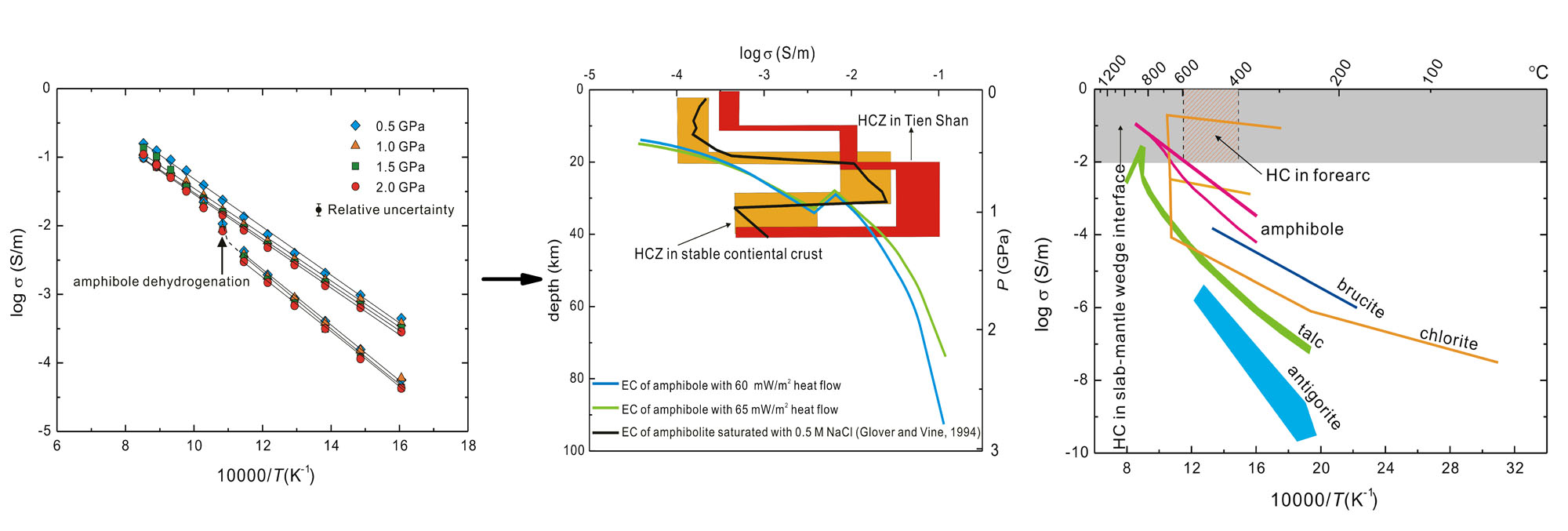Magnetotelluric measurements reveal that high conductivity anomalies happen in both forearc and backarc regions of subduction zones as well as the continental middle-lower crust. Such anomalies are generally explained as a consequence of aqueous fluid released from the dehydration of hydrous minerals.
Amphibole is an important constituent of the continental mid-crust and a major hydrous phase in subduction zones, such that its dehydration at high temperature has been suggested to provide a significant source of aqueous fluid.
Dr. HU Haiying from the research team led by Prof. DAI Lidong from the Institute of Geochemistry of the Chinese Academy of Sciences (IGCAS) measured the electrical property of Fe-bearing amphibole at conditions of 0.5-1.5 GPa and 623-113 K by virtue of the AC impedance spectroscopy and high temperature-high pressure platform.
The results showed that a remarkable enhancement of electrical conductivity of Fe-bearing observed at temperature of ~843 K was not attributed to conductive aqueous fluid but to oxidation-dehydrogenation reaction.
Moreover, a slight decrease in activation enthalpy from ~0.8 eV before dehydrogenation to ~0.70 eV after dehydrogenation was associated with the structural adjustments, confirming that small polaron conduction dominating the conductivity of amphibole over the entire temperature range.
Their findings indicated that amphibole dehydrogenation could not serve as a principal source of aqueous fluid, nevertheless, the enhanced electrical conductivity of amphibole after dehydrogenation was sufficient to account for the high conductivity anomalies observed by magnetotelluric sounding in slab-mantle wedge interfaces and the continental lowermost mid-crust.
The study was published in Earth and Planetary Science Letters. The results provide a new and alternative explanation for the high conductivity anomalies in continental mid-crust and subduction zones.
This research was supported by the Strategic Priority Research Program (B) of the Chinese Academy of Sciences, Key Research Program of Frontier Sciences of the Chinese Academy of Sciences, "135" Program of the Institute of Geochemistry of CAS, CAS, National Science Foundation of China and the Chinese Scholarship Council.
|

|
| The electrical conductivity of amphibole during the entire dehydrogenation process and the explanations for high conductivity anomalies in subduction zones and continental crust (Image by IGCAS) |
Contact:
DAI Lidong
Institute of Geochemistry, Chinese Academy of Sciences
E-mail: dailidong@vip.gyig.ac.cn
(By HU Haiying)